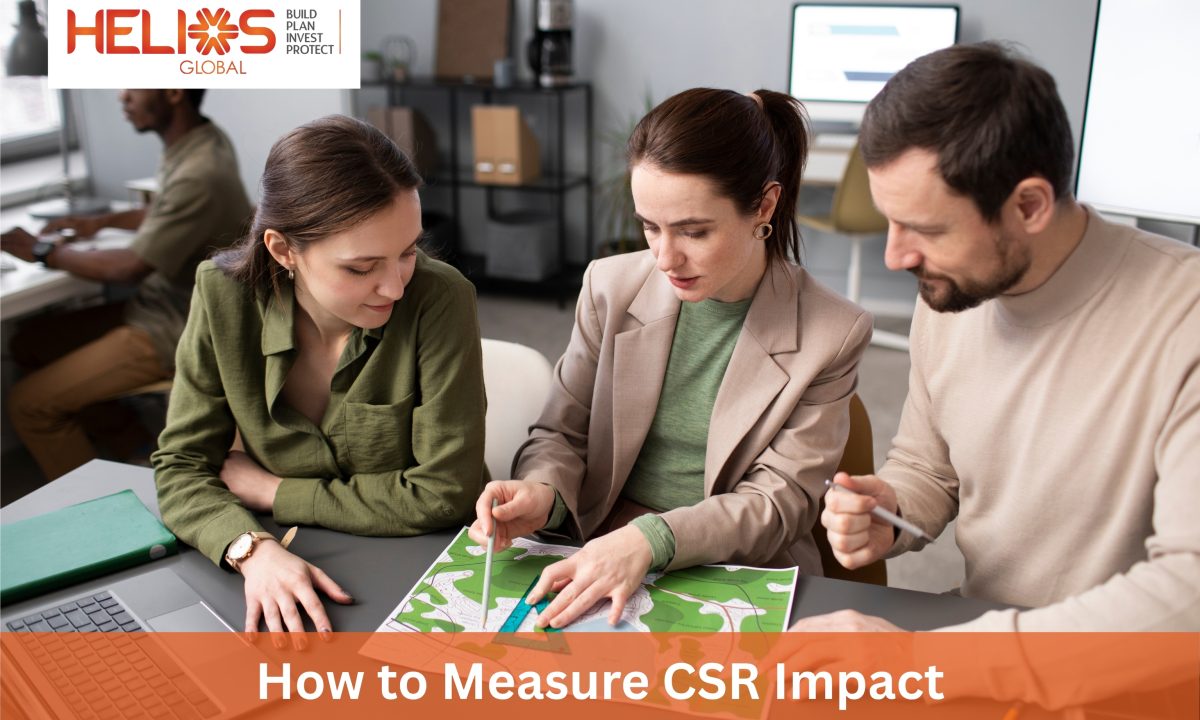How to Measure CSR Impact: A Powerful, Practical Guide

Corporate Social Responsibility (CSR) is no longer a checkbox — it’s a vital way businesses create trust and long-term value. But good intentions aren’t enough: organizations must learn how to measure CSR impact to prove results, refine programs, and build credibility. Helios Global believes that measurable CSR is effective CSR — here’s a clear, practical roadmap to get you there.
Why Knowing How to Measure CSR Impact Is Essential
Measuring CSR impact brings focus and accountability. Stakeholders demand transparency, regulators expect evidence, and communities want real benefits. When you know how to measure CSR impact, you can demonstrate outcomes (not just outputs), justify investments, and amplify the social and environmental value you create.
Powerful Metrics: What to Track to Measure CSR Impact
Selecting the right metrics is the first step in learning how to measure CSR impact. Focus on indicators that align with your goals:
-
Social Metrics: number of beneficiaries, improvements in education or health indicators, skills training outcomes.
-
Environmental Metrics: reduction in emissions, waste diverted, water saved, biodiversity restored.
-
Economic Metrics: local jobs created, supplier development, income uplift in target communities.
-
Employee Metrics: volunteer hours, staff participation rates, internal engagement scores.
Combining quantitative metrics with qualitative stories (testimonials, case studies) makes your results both credible and relatable.
Proven Methods: How to Measure CSR Impact Effectively
To truly understand how to measure CSR impact, use a blend of methods:
-
Baseline & Endline Surveys: measure change over time among beneficiaries.
-
Social Return on Investment (SROI): translates outcomes into monetary value to show social ROI.
-
Third-Party Evaluations: independent audits increase trust and validate findings.
-
Dashboards & KPIs: keep real-time visibility on progress and course-correct quickly.
Helios Global recommends designing measurement systems during program planning — not after — so data collection is purposeful and consistent.
Practical Steps: From Data to Decisions
Knowing metrics and methods is only half the battle. Here’s how to convert measurement into action:
-
Define clear objectives tied to those metrics.
-
Set realistic targets and timeframes.
-
Collect data consistently — choose simple, repeatable tools.
-
Analyze and visualize trends with dashboards.
-
Report transparently to stakeholders and use learnings to refine programs.
This loop — plan, measure, learn, adapt — is at the heart of effective CSR.
Real-World Impact: Communicate with Confidence
When you can show evidence of results, you unlock new opportunities: stronger partnerships, increased employee pride, and better brand reputation. Use concise, honest reporting — combine hard numbers with human stories to demonstrate both scale and depth. Helios Global helps organizations craft impact reports that resonate with investors, regulators, and communities.
Final Thought: Turn CSR Effort into Lasting Value
Learning how to measure CSR impact transforms CSR from pleasant optics into a strategic asset. With the right metrics, robust methods, and a commitment to continuous learning, your CSR programs will deliver measurable benefits — for communities, the environment, and your business. If you’d like a tailored measurement framework, Helios Global can help design and implement one that fits your mission and scale.


